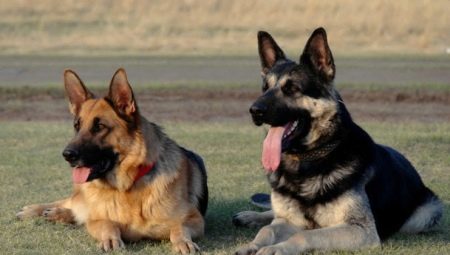The East European Shepherd Dog is sometimes mistaken for a subspecies of a German counterpart. This is not true. Differences between animals are manifested in the signs of the exterior, and in the history of breeds. Let's take a closer look at the nuances of the breeds, their nature, in order to understand for ourselves which of these dogs is better to choose.
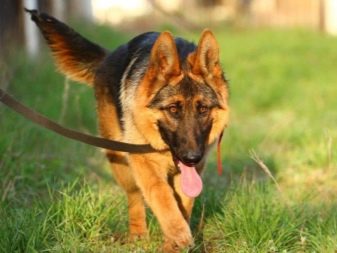

Origin history
Let's look at the history of two breeds.
German Shepherd
From one among other versions it follows that the progenitor of the breed is a small Indian wolf. The beast was found in Europe many centuries ago. About 6 thousand years ago, the so-called bronze dog came from him, in whose veins the blood of wild and domesticated animals flowed. A bronze dog is followed by a shepherd dog named hofovart. And already from this animal appeared German shepherds, which, however, were initially outwardly far from those that we can see today.
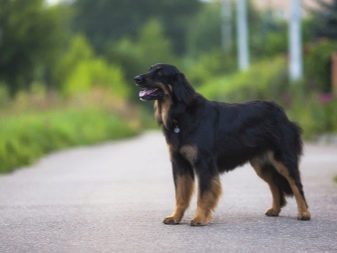

If we consider the etymology of the word “shepherd”, we learn that it has a common root with the word “sheep”, indicating the role of a shepherd, that is, a shepherd is an animal that guarded the shepherd. The same etymology is the German word Schäferhund.
The first mention of these dogs dates back to the 7th century. The West Germanic Aleman tribe describes in its code of laws the type of punishment that people who kill a shepherd dog are subjected to. During the XVIII century, livestock breeding was actively developing in Germany. Farmers needed animal guards that could handle livestock. Shepherd dogs coped well with this role.At the same time, breeding was conducted to obtain animals with desired performance without paying attention to the appearance of the dogs. Because of what, new individuals were very different from their counterparts.
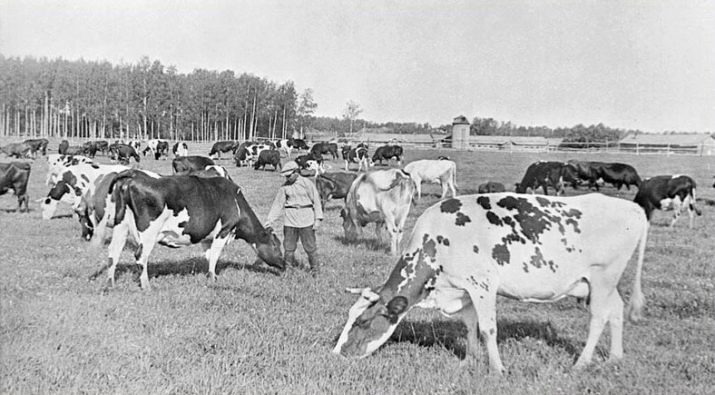
The breeding of shepherd dogs was put on stream. No standards were set for the breed. There were two kennels: Württemberg and Thuringia, however dogs were bred all over German soil. If we compare the animals obtained in these two centers, then the exterior of the dogs varied significantly. Pets from Thuring had:
- wool of a wolf color;
- flexible tail rolled into a ring;
- average growth and sharp ears.
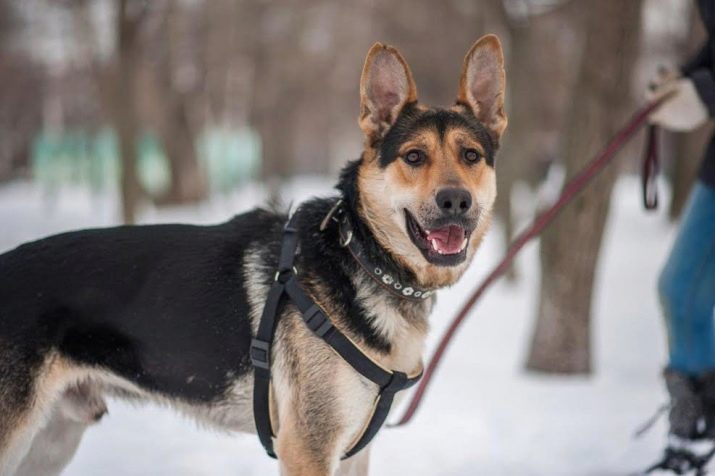
Animals were more active and mobile compared to individuals from Württemberg. But the latter by nature are more calm, balanced. The exterior of the dog is impressive, the skin is painted in spots, the ears are sagging.
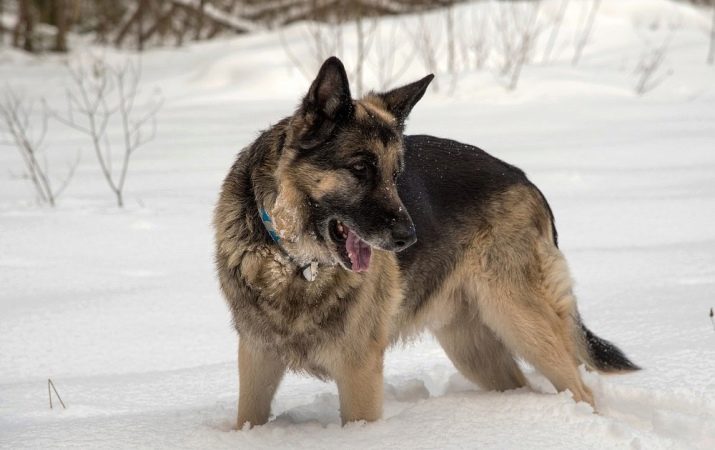
And although there were differences between these species, the owners calmly crossed animals. In 1882, the breed of German Shepherds was first introduced to the general public. Two males - Greif and Cuirass - distinguished by their light color of wool won the admiration of the crowd, which served as an impetus for further breeding of the breed. It is believed that it was the dogs from Thuring who became the ancestors of the breed that we see today.
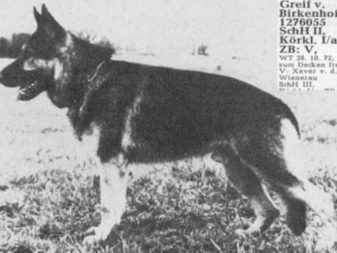
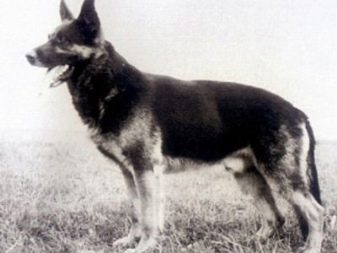
In 1891, the first shepherd dog society was formed, for the first time the breed had standards. After closing the club, Mr. Richelmann continued to work on the selection of shepherd dogs in order to preserve the community’s achievements. In 1899, Max von Stefanitz met with a shepherd. The first dog he acquired was called Horand von Grafarth.
It was this dog in the hands of Stefanitz that laid the foundation for further breeding of the breed.
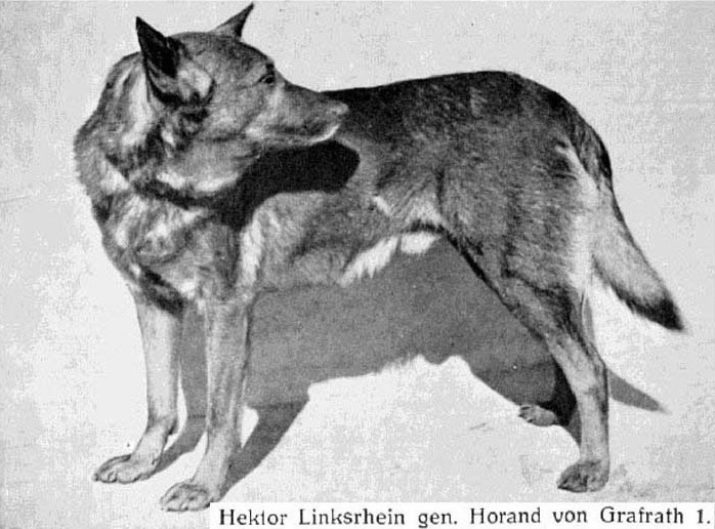
Stefanitz had a veterinary education, allowing him to make his dream a reality. He wanted to breed the perfect shepherd dog. And to make the matter look solid, Max first organized the Union of German Shepherd Owners (SVNO). This company was not engaged in commercial benefits from breed breeding.
Grafart Shepherd Dog differed phenomenal exterior parameters. Stefanitz did not spare time and effort to breed the breed:
- traveled all over the country in search of suitable individuals of the opposite sex;
- collaborated with nursery owners, explaining to them the nuances in breeding.
After 100 years, SVNO became the most impressive officially registered organization among all such communities. The breed standards put forward by Max von Stefanitz are considered to be the standard.
Thanks to the work of SVNO, the whole world was able to get acquainted with the breed of German shepherds. Interest in German individuals was also shown by not very picky owners, who decided to move away from breeding rules for personal gain. The gene pool of German shepherds began to pour in the blood of decorative and other breeds, animals with an unstable psyche. Large pets were very popular. To save the thoroughbred of the breed, in 1925 SVNO decided to hold a conference, which included all the breeders who wanted to maintain the standards of the breed of German shepherd dogs. A selection was made of dogs participating in various championships, among them a dog named Claude von Boxberg was identified. It was from Claude that the main genetic branches of the breed originated.
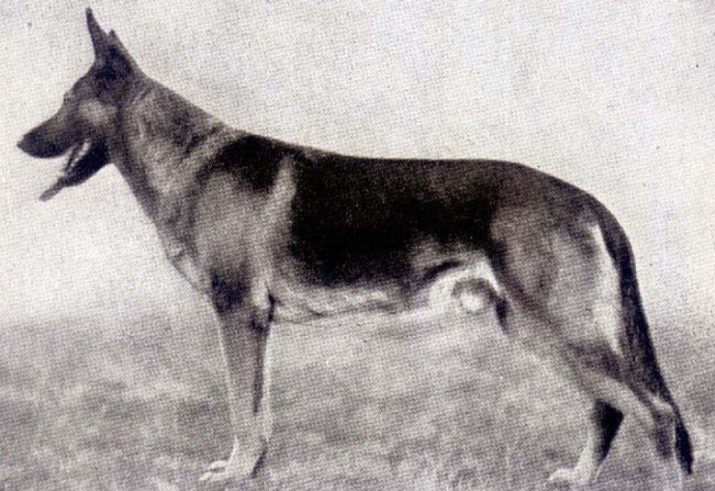
Max von Stefanitz died in 1936, but members of the Union continued his work. During the Second World War, German shepherd kennels began to disappear. In mid-1946, it was decided to nominate not one individual, but a group of dogs for the champion title. For the first time in history, the elite was a group of eight representatives of this breed. The sixties of the last century - the time of active selection of animals. At that time it was fashionable to attend competitions and dog shows, to train pets. The emphasis of all activities: excitement, playfulness, activity. They did not pay attention to the exterior of the pets, the main thing is the mobility of the dog, its tirelessness. Then the first “sports” breeders appeared. The cynological community decided to distinguish two directions of thoroughbred dogs: elite individuals, working animals.
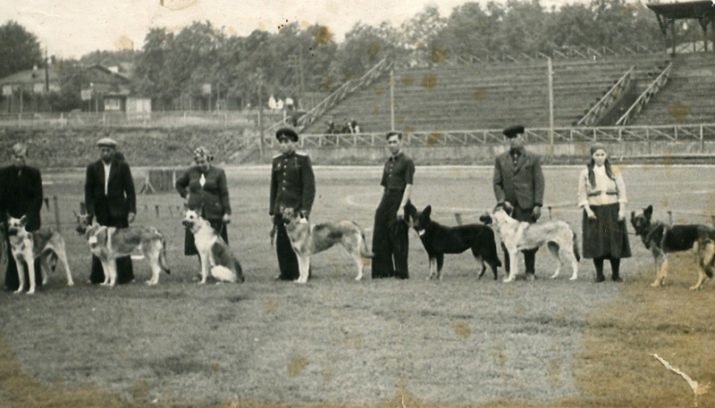
For the first category, it was necessary to pass a test for physical endurance, absence of defects, balance, cleanliness of the line and exterior. Correspondence of origin was carried out by the method of animal DNA analysis. The value of sports individuals was in the number of victories won in the championships, and the rest - the mind, appearance and so on - were not evaluated.
East European breed
The East European breed was bred with the participation of German Shepherds. Over time, the "Europeans" found a number of differences that removed the breed from the source. Animals became larger in size, massive, which allowed them to be used in the security and guard service. Today, the appearance of the East European breed is significantly different from German counterparts.
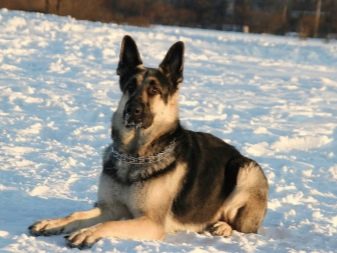
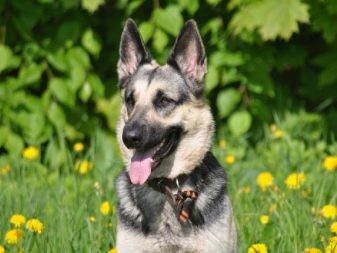
The breed standard was formed in 1976, but it was not recognized as an independent breed. Individuals were equated with a variety of German shepherd. In 1990 there was a crisis of this breed, the popularity of animals began to decline sharply. “Europeans” began to be knitted with a German counterpart, but the puppies still remained “Europeans”. However, this selection method had a beneficial effect on the breed - it turned out to get rid of the following disadvantages:
- “Soft” back;
- lowered sacrum;
- bent limbs.
Despite the advantages, the breeders were extremely wary of the "Europeans", which could lead to the disappearance of the breed. On the territory of Russia in 1991, an alliance of East European breed nurseries was organized. At the beginning of the XXI century, a single genealogy book of bindings was created. After a couple of years, the cynological community officially adopted the standard for the "Europeans." Dog handlers wanted the breed to be able to perform many different tasks: to guard, defend, guard, escort, patrol and perform search work.
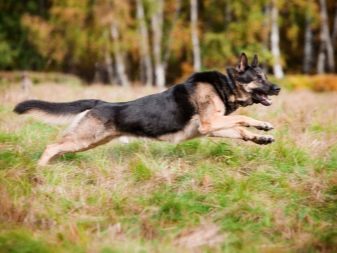
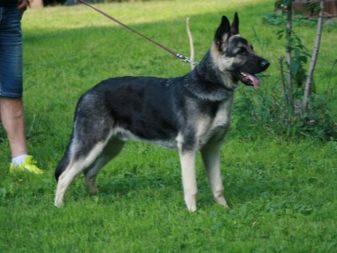
These dogs are also used as guide dogs for the visually impaired.
Comparison of appearance
To understand what breed in front of you, you should compare the appearance of animals. Each breed has its own differences. The exterior of a German shepherd is characterized by the following parameters.
- Head. The ears of the animal are erect, pointed up, high set. In puppyhood, ears hang. The eyes are dark brown, almost black. Dogs with bright eyes are considered defective and cannot be bred. Jaws developed, scissor bite. The nose is black.
- Body. The body is elongated. The back is straight, closer to the tail goes downhill. The front area of the body is located above the back.
- Height. Males reach a height at the withers of about 65 cm, females - no more than 60 cm. The weight of the male varies in the region of 40 kg, girls - 32 kg.
- Wool cover can be short, long, soft and cruel. The color of the coat is diverse: from zonal clarified to tan with black. Individuals with spots are allowed, a black mask is formed on the muzzle.
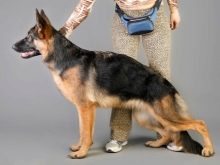
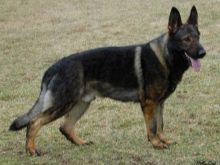
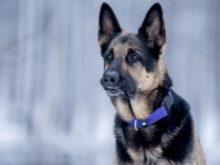
The "Europeans" have differences.
- Torso the pet is more massive. Long-legged animals, the silhouette of the body is rectangular. The body length in relation to height (at the withers) is 17% longer. The loin is short, the pelvis is lowered. The thoracic section is wide, the abdomen is taut. The tail is saber-shaped, at rest it is lowered down, the tip of the tail is located at the level of the knees.
- Head the shape is similar to a blunt wedge, the superciliary arches are pronounced, a hump is acceptable on the back of the nose. The nose is black. Eye color from dark brown to hazel. Ears are erect.
- Growth higher than that of the "Germans." Males reach 75 cm, females grow to 70. Male weight is 50 kg, girls - around 40.
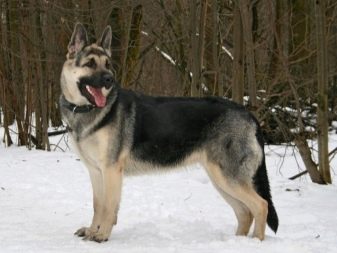
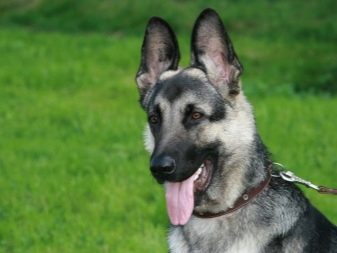
Differences in character
Animals also differ in characters. German shepherd temperaments, easy to train, psychologically stable.Pets are prone to unconditional obedience, always respond to a nickname. Devotees, they treat strangers calmly, without showing aggression. They are friendly to children, support them in games.
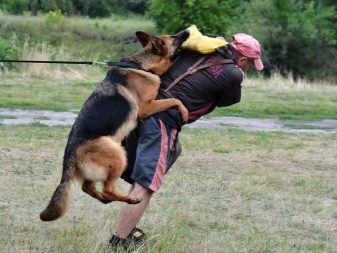
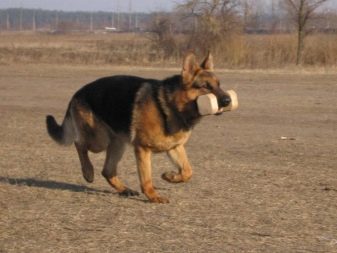
The East European Shepherd Dog is also a well-balanced breed with a sharp mind. The animal is bold, active, able to make decisions quickly, in a short time gets used to the owner.
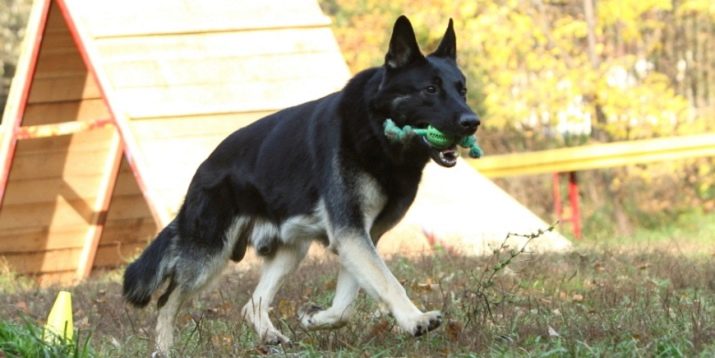
There is a difference in the training of these breeds. For the "Europeans", training is vital, the process requires perseverance, perseverance, and the help of a dog handler. The German shepherd is more understanding, it is easy to teach it even on your own, if you know at least the basics of training.
Both varieties are wonderful for children; you can always leave your children with them and not worry about the well-being of their friendship.
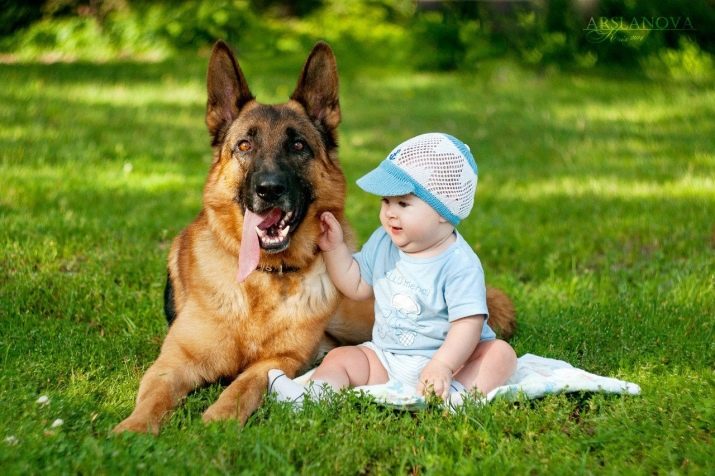
Who is better to choose?
If you intend to engage in security, control or other activities requiring a dog watchman, it is better to take a "European". This breed is widely used in the work of special services, the Ministry of Emergencies. Keep these dogs in large enclosures.
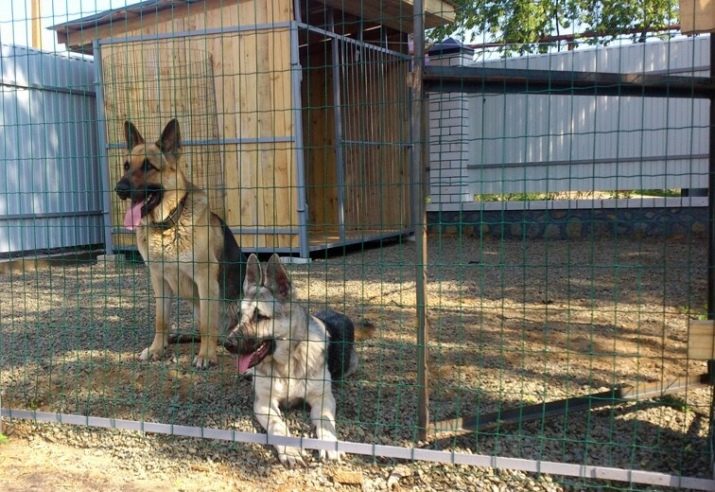
According to dog handlers, a German shepherd is better suited for keeping a house. She will be a good company in sports and outdoor activities.
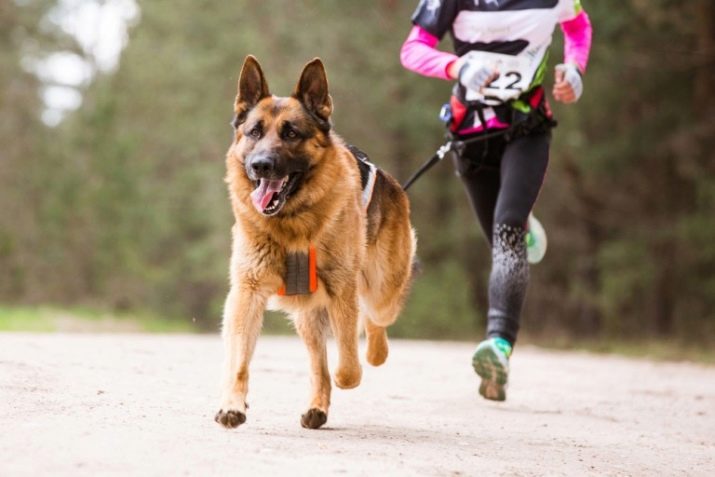
The similarities and differences between the East European and German Shepherds are discussed in the next video.
